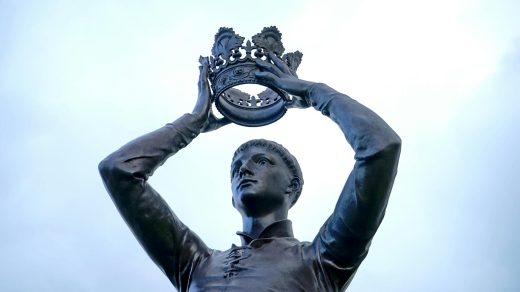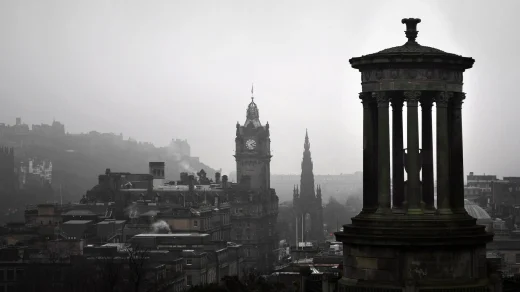St Ninian and St Kentigern
The earliest known Scottish saint is St Ninian, or Bishop Ninian, who
founded the first monastery in Scotland at Whithorn in the territory of the
Britons around AD 500. Ninian’s life remains a mystery: judging from his name
he was probably a Briton, and he seems to have been an exponent of the Roman Church, perhaps after receiving training in Rome, rather than the early Celtic Church with its strong ties to Ireland. He was concerned with the implementation of Christianity north of Hadrian’s Wall at a time when most of the Caledonian Tribes were still pagan.

A carved oak figure of a bishop found near Whithorn at Wigtownshire. The figure is thought to represent Saint Ninian, who was a bishop during the late fifth century, although the figure itself dates from the 14th century. One legend involving St Ninian tells of him planting seeds which grew to fruition
within a few hours, thus relieving his monastery’s food shortages.
Following in Ninian’s footsteps was St Kentigern, or St Mungo, as he is more familiarly known. Tradition has it that Kentigern founded a monastery at Govan and another at the site of Glasgow Cathedral, although this cannot be proved historically.
Again little is securely known beyond the fact that he possibly founded a bishopric for the Kings of Dumbarton and that he died in AD 612. His second title, Mungo, means ‘very dear one’ in the language of the Britons and the myths and tales surrounding him reveal a popularity amongst the common people. In one such story a local king refuses to pay his taxes to the Church, whereupon Kentigern curses him – inducing the River Clyde to rise and sweep all the king’s grain from his barns and carry it to the saint’s feet
St Mungo plays a large part in the early culture of Glasgow. The city’s cathedral (right) is named after him and held his tomb until his relics were removed during the Middle Ages.



